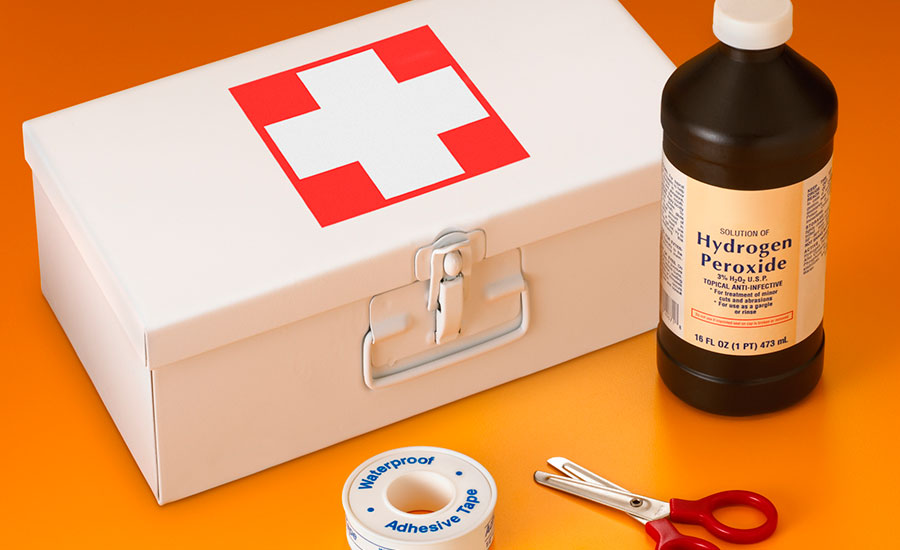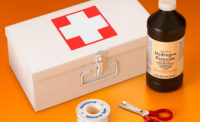On January 16, 2007, OSHA’s Director of Enforcement, Richard Fairfax, explained in a letter of interpretation requirements for first aid, CPR, and bloodborne pathogens exposure training. Does everyone need to be trained? What if there is a career rescue squad within five miles of the workplace?
OSHA’s reply: “OSHA's standard for first aid training in general industry, 29 CFR 1910.151(b), provides:
In the absence of an infirmary, clinic, or hospital in near proximity to the workplace which is used for the treatment of all injured employees, a person or persons shall be adequately trained to render first aid. Adequate first aid supplies shall be readily available.
“In the construction industry, 29 CFR 1926.50(c) provides:
In the absence of an infirmary clinic, hospital, or physician, that is reasonably accessible in terms of time and distance to the worksite, which is available for the treatment of injured employees, a person who has a valid certificate in first-aid training from the U.S. Bureau of Mines, the American Red Cross, or equivalent training that can be verified by documentary evidence, shall be available at the worksite to render first aid.
“The primary requirement addressed by these standards is that an employer must ensure prompt first aid treatment for injured employees, either by providing for the availability of a trained first aid provider at the worksite, or by ensuring that emergency treatment services are within reasonable proximity of the worksite. The basic purpose of these standards is to assure that adequate first aid is available in the critical minutes between the occurrence of an injury and the availability of physician or hospital care for the injured employee.
“One option these standards provide employers is to ensure that a member of the workforce has been trained in first aid. This option is, for most employers, a feasible and low-cost way to protect employees, as well putting the employer clearly in compliance with the standards. OSHA recommends, but does not require, that every workplace include one or more employees who are trained and certified in first aid, including CPR.
“The other option for employers is to rely upon the reasonable proximity of an infirmary, clinic or hospital. OSHA has consistently taken the view that the reasonable availability of a trained emergency service provider, such as fire department paramedics or EMS responders, would be equivalent to the "infirmary, clinic, or hospital" specified by the literal wording of the standards. Emergency medical services can be provided either on-site or by evacuating the employee to an off-site facility in cases where that can be done safely.
“An employer who contemplates relying on assistance from outside emergency responders as an alternative to providing a first-aid-trained employee must take a number of factors into account. The employer must take appropriate steps prior to any accident (such as making arrangements with the service provider) to ascertain that emergency medical assistance will be promptly available when an injury occurs. While the standards do not prescribe a number of minutes, OSHA has long interpreted the term "near proximity" to mean that emergency care must be available within no more than 3-4 minutes from the workplace, an interpretation that has been upheld by the Occupational Safety and Health Review Commission and by federal courts.
“Medical literature establishes that, for serious injuries such as those involving stopped breathing, cardiac arrest, or uncontrolled bleeding, first aid treatment must be provided within the first few minutes to avoid permanent medical impairment or death. Accordingly, in workplaces where serious accidents such as those involving falls, suffocation, electrocution, or amputation are possible, emergency medical services must be available within 3-4 minutes, if there is no employee on the site who is trained to render first aid. OSHA exercises discretion in enforcing the first aid requirements in particular cases. OSHA recognizes that a somewhat longer response time of up to 15 minutes may be reasonable in workplaces, such as offices, where the possibility of such serious work-related injuries is more remote.
“The first aid training standards at 29 CFR 1910.151 and 1926.50(c) generally apply throughout the industries that they cover. Other standards which apply to certain specific hazards or industries make employee first aid training mandatory, and reliance on outside emergency responders is not an allowable alternative. For example, see 29 CFR 1910. 266(i)(7) (mandatory first aid training for logging employees), and 29 CFR 1910.269(b) (requiring persons trained in first aid at work locations in the electric power industry).
“The bloodborne pathogens standard at 29 CFR 1910.1030(g)(2) requires employers to provide training to any employees who have occupational exposure to blood or other potentially infectious materials, such as employees assigned medical or first aid duties by their employers. The standard at 29 CFR 1910.1030(b) defines "occupational exposure" as "reasonably anticipated skin, eye, mucous membrane, or parenteral contact with blood or other potentially infectious materials that may result from the performance of an employee's duties." If an employee is trained in first aid and identified by the employer as responsible for rendering medical assistance as part of his/her job duties, that employee is covered by the bloodborne pathogens standard.”



